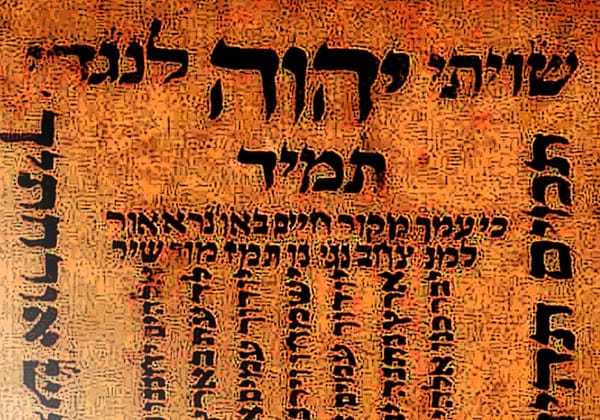About 1,300 years ago, some unknown scribe in Roman-dominated Palestine took a book of the Gospels in Syriac, erased its original text, and reused the parchment for another purpose. The parchment was scarce in antiquity, so existing texts were sometimes erased, recicled and materials were reused for new books. A medievalist from the Austrian Academy of Sciences has recently been able to make legible the lost words on this multi-layered manuscript (palimpsest) using UV light technology. Grigory Kessel discovered one of the earliest translations of the Gospels in existence (c. 3rd century CE) overwritten with a newer text.
"The tradition of Syriac Christianity knows several translations of the Old and New Testaments," says medievalist Grigory Kessel. "Until recently, only two manuscripts were known to contain the Old Syriac translation of the gospels."
One of these is kept in the British Library in London, and another was discovered as a palimpsest in St. Catherine's Monastery at Mount Sinai. Fragments from the third manuscript were just recently identified as part of the Sinai Palimpsests Project. This small manuscript fragment can now be considered the fourth textual witness. It was identified by Grigory Kessel using ultraviolet photography as the third layer of text, i.e., double palimpsest, in the Vatican Library manuscript. The fragment is so far the only known remnant of the fourth manuscript that attests to the Old Syriac version of the Gospels.
While the original Greek of Matthew chapter 12, verse 1 says, "At that time Jesus went through the grainfields on the Sabbath, and his disciples became hungry and began to pick the heads of grain and eat," the Syriac translation says, "[...] began to pick the heads of grain, rub them in their hands, and eat them."
What is the significance of this discovery? The Syriac translation of the Gospels was written at least a century before the oldest surviving Greek manuscripts, including the Codex Sinaiticus. The earliest surviving manuscripts with this particular Syriac translation date from the 6th century and are preserved in the erased layers, so-called palimpsests, of newly written parchment leaves. Textual witnesses such as this manuscript provide researchers with evidence about the transmission, translation, and circulation of New Testament texts.
So maybe for an average Bible read this is not earthshattering, but this is a meaningful discovery for those who painstakingly study the ancient texts being the translations everyone enjoys.
Original Source: Österreichische Akademie der Wissenschaften

Missing Ingredients: Your Bible Study Recipe
In case you have not heard, I have published a new book recently. It delves into the topic of ancient texts that stand behind modern Bible translations. If this topic is of interest to you, you might enjoy the book. It is available in both Kinde and Paperback!











Member discussion